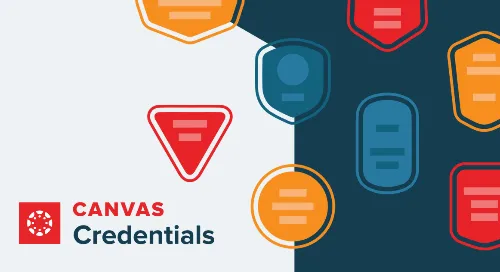
Digital badges and microcredentials have become invaluable assets for individuals, allowing them to showcase their proficiency across various fields and enhance their professional portfolios. There's a growing recognition among employers and academic institutions of these credentials' credibility as indicators of candidates' potential to excel in their roles—a huge win for today's workforce.
However, as organizations increasingly integrate these credentials into their recruitment and hiring processes, ensuring that the badges earned align seamlessly with the specific skills demanded by the job is imperative. Organizations developing credentialing programs play a pivotal role in addressing this challenge. By prioritizing providing secure, portable, and easily shareable digital credentials, they enable individuals to navigate career pathways with ease and agility.
Designing Effective Programs
Behind every successful credential system lies a well-crafted program that prioritizes skill development, fosters connections, and encourages innovation. Organizations must focus on creating programs that go beyond traditional education models, offering practical, hands-on learning experiences that equip individuals with the skills they need to thrive in today's competitive landscape.
- Skill-Centric Approach: Effective programs prioritize skill development, focusing on tangible competencies in demand in the workforce. Whether it's mastering a new technology, honing leadership abilities, or developing communication skills, the emphasis should be on practical, actionable learning experiences that prepare individuals for real-world challenges.
- Seamless Credentialing: Organizations should leverage digital credentialing platforms to create secure, portable, and shareable credentials that enable learners to showcase their skills and achievements. By embracing digital credentials, organizations can streamline the credentialing process, reduce administrative burdens, and empower learners to easily share their credentials with prospective employers and collaborators.
- Mentorship and Networking: Another critical aspect of effective programs is the provision of mentorship and networking opportunities. By connecting learners with experienced professionals in their field, organizations can provide valuable guidance, support, and networking opportunities that enhance the learning experience and open doors to new opportunities.
Maximizing Impact
To maximize the impact of their credential systems, organizations must carefully design and implement their programs with the needs of learners in mind. Here are some key considerations:
- Customization: Tailor programs to meet the specific needs and aspirations of learners. Whether offering flexible learning pathways, personalized mentoring, or industry-specific training, customization ensures that programs are relevant and engaging for participants.
- Collaboration: Foster collaboration and partnership with industry stakeholders, educational institutions, and other organizations to enhance the value and credibility of your credential system. By collaborating with industry leaders, organizations can ensure that their programs are aligned with current industry trends and standards, increasing the relevance and desirability of their credentials.
- Continuous Improvement: Regularly evaluate and refine your credential programs based on feedback from learners, industry partners, and other stakeholders. By continuously monitoring and improving program quality, organizations can ensure that their credential systems remain relevant, effective, and impactful in a rapidly changing world.
Organizations can create credential systems that validate learning and empower individuals to thrive in today's evolving workforce by prioritizing skill development, embracing digital credentialing, and fostering collaboration and continuous improvement. With effective programs that offer secure, portable, and shareable digital credentials, organizations can connect learners to new opportunities and help them achieve their full potential.
Remember, it's not just about the credentials themselves but the programs that underpin them that hold the key to unlocking meaningful growth and success for learners.
Related Content
 Teaching-With-Tech-10-Benefits.jpg
Teaching-With-Tech-10-Benefits.jpgBlogs
 cidilabs.png
cidilabs.pngBlogs
 canvas_x_tg_logo_lockup_780_x_520.png
canvas_x_tg_logo_lockup_780_x_520.pngBlogs
